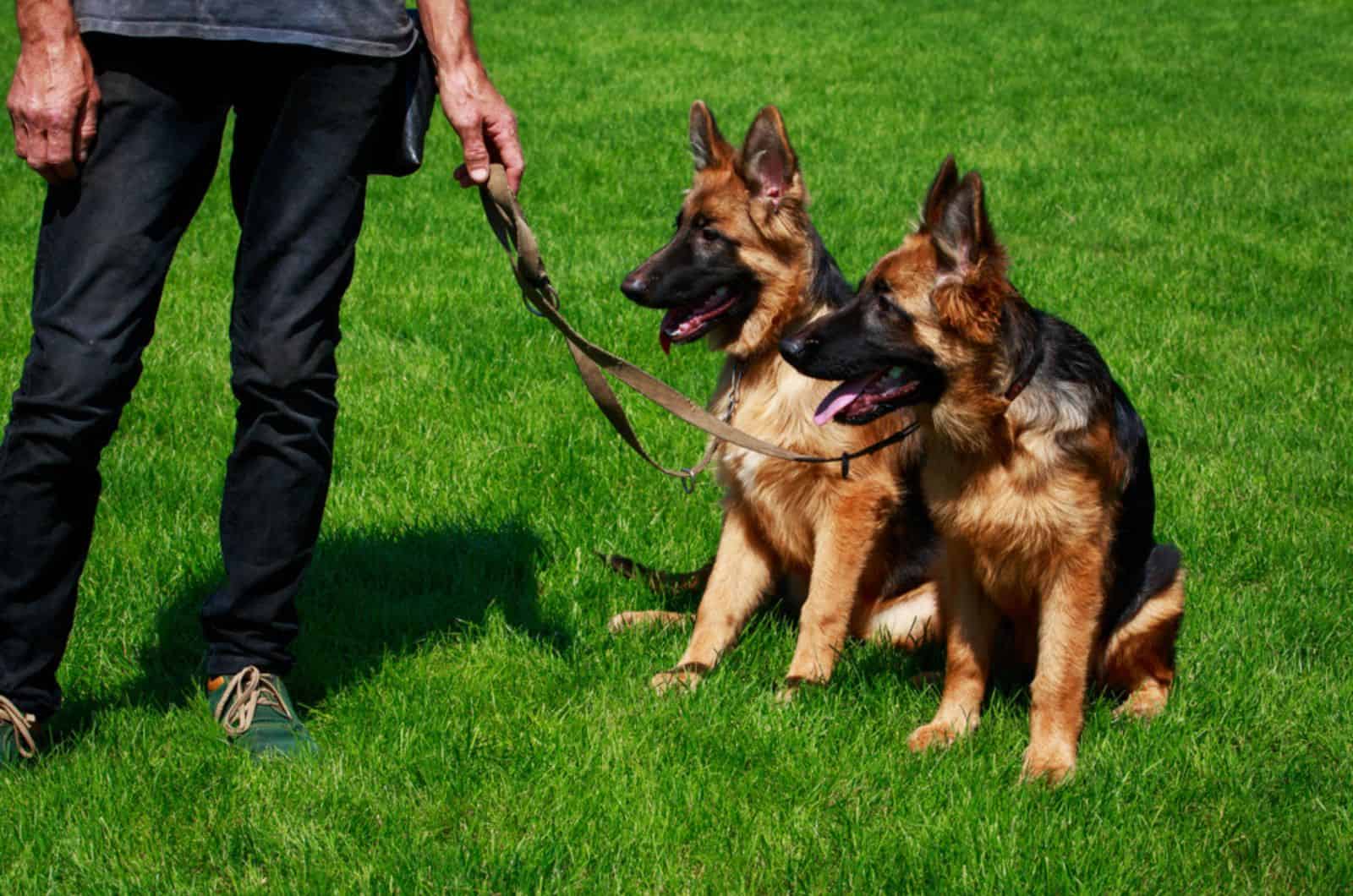Are you interested in teaching your German Shepherd how to walk properly on a leash? Well, I’m not gonna say that that’s actually a piece of cake, but it’s kind of pretty close!
GS canines are one of the smartest breeds in the world, and they’re naturally work-oriented, which is a plus if you’re intending to adopt or buy one.
But, how exactly do you leash train your GSD? What are the proper methods? And, what are the dos and don’ts in this regard? I’m gonna give you a few hints on all of these questions in the following part of this article.
Let’s take a look!
Introducing A German Shepherd Puppy To A Leash
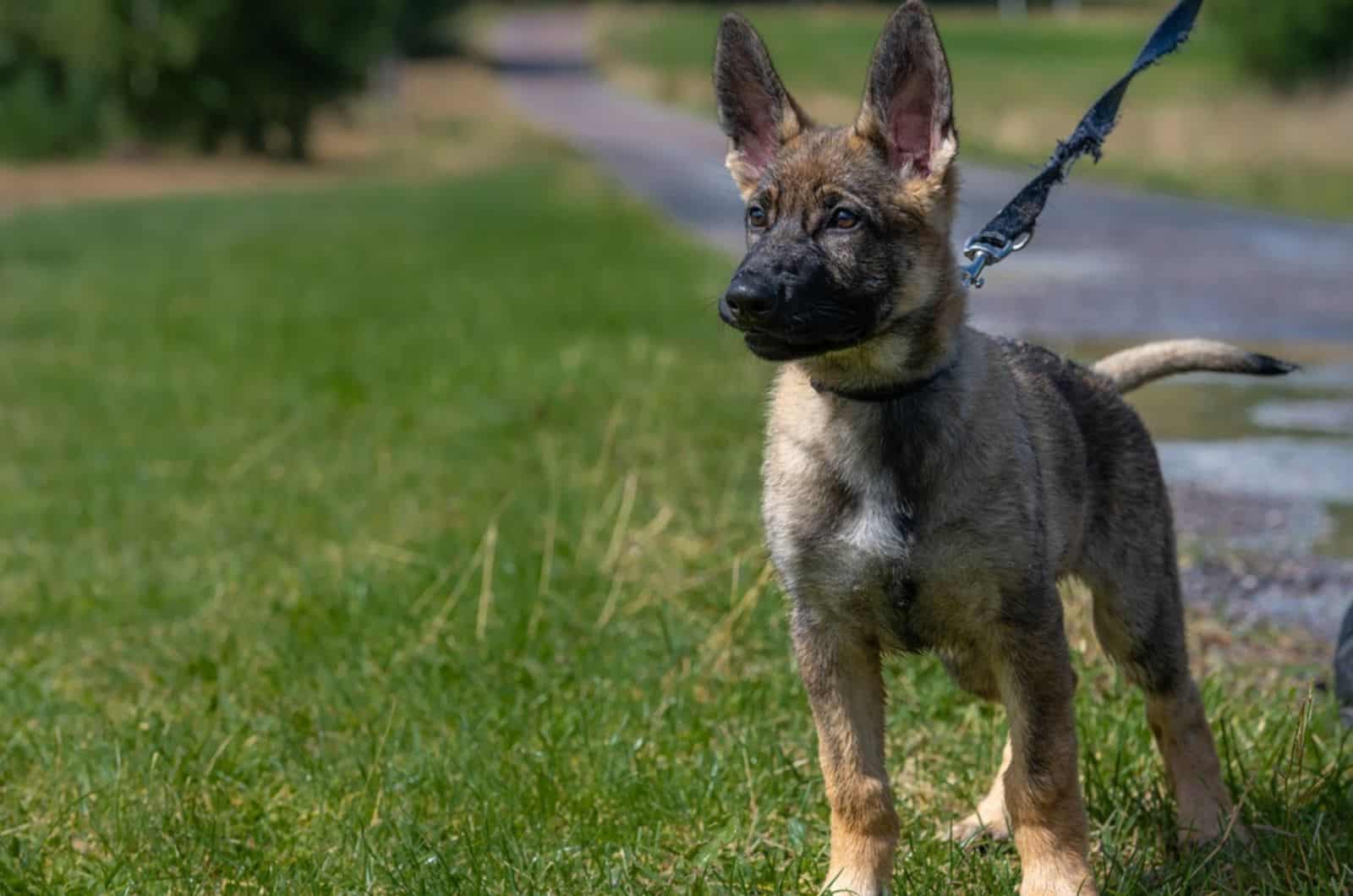
First and foremost – you need to introduce your GS boy to a leash, especially if you’re dealing with an adult. Sure, these canines are one of the easiest breeds to potty train, obedience train, and socialize, but even they need a little push in the beginning.
Allow your canine to sniff the leash and the collar. Make sure he gets familiar with it first. And, above everything – make sure his collar fits properly and isn’t too tight!
Prepare a lot of treats, as you will need them to stimulate your dog in this regard.
For the first few times, motivate him with treats when you’re putting the collar around his neck. This way, you will create an association that leash walking is a positive thing. And, you’re definitely not going to get a “No” for an answer!
The Importance Of Indoor Training
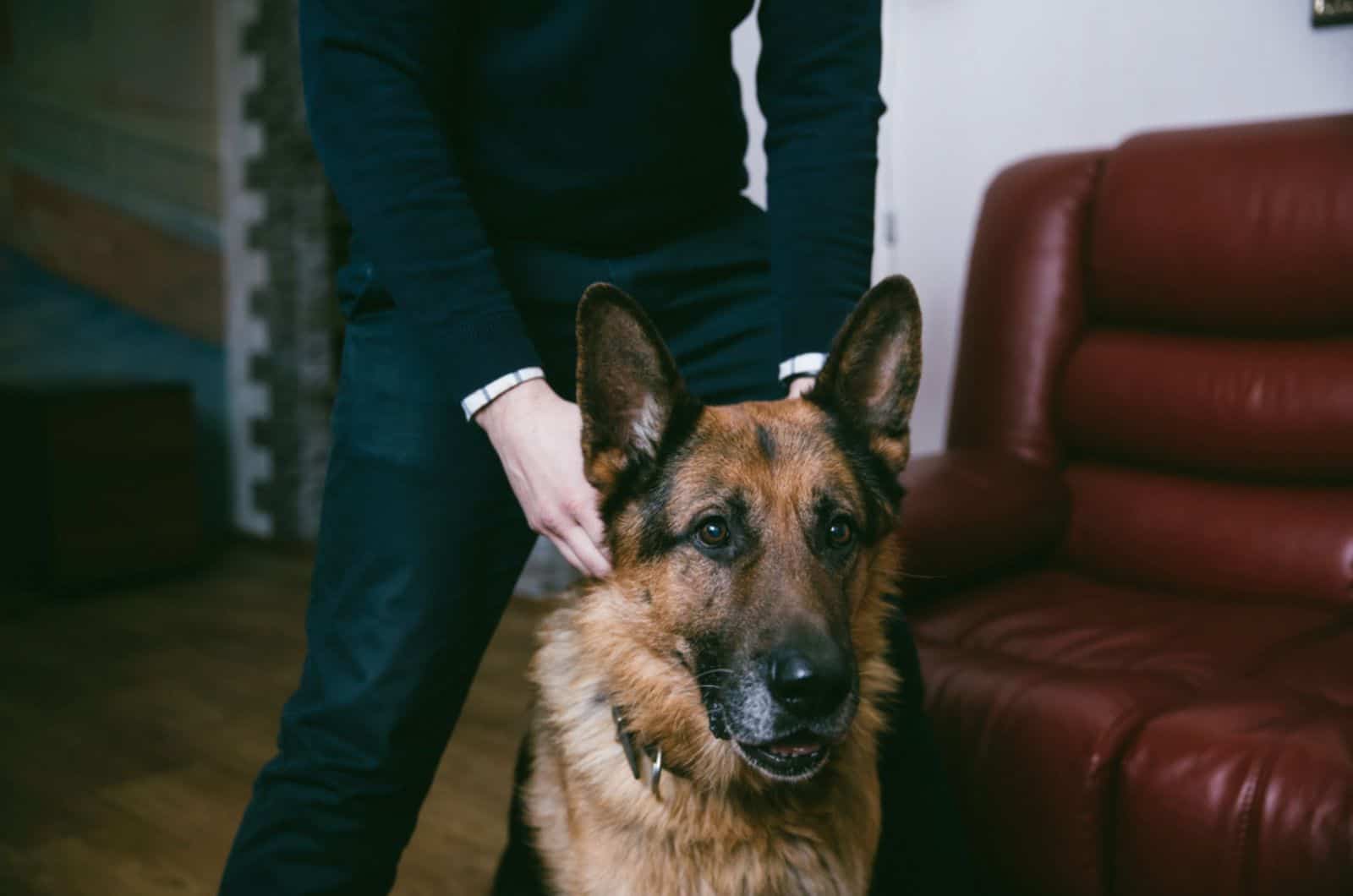
Before you start with any kind of leash training, make sure your puppy goes through three things first: socialization, crate training, and housetraining. According to the AKC, this is crucial for puppies that are between eight and sixteen weeks of age.
After you have successfully adapted your German Shepherd to his new environment, you can slowly start implementing the leash training methods inside.
Indoor training is crucial for success in this regard, as a controlled environment without distractions is the best place to start.
Once you put a leash on your dog in the house – allow him to walk around and even drag in on the floor. Make sure your companion gets familiar with “the thing around its neck” so you won’t have problems once you get out of the house.
Of course, always do this in your own presence, never leaving a leashed puppy without supervision.
Leash Training: Three Steps
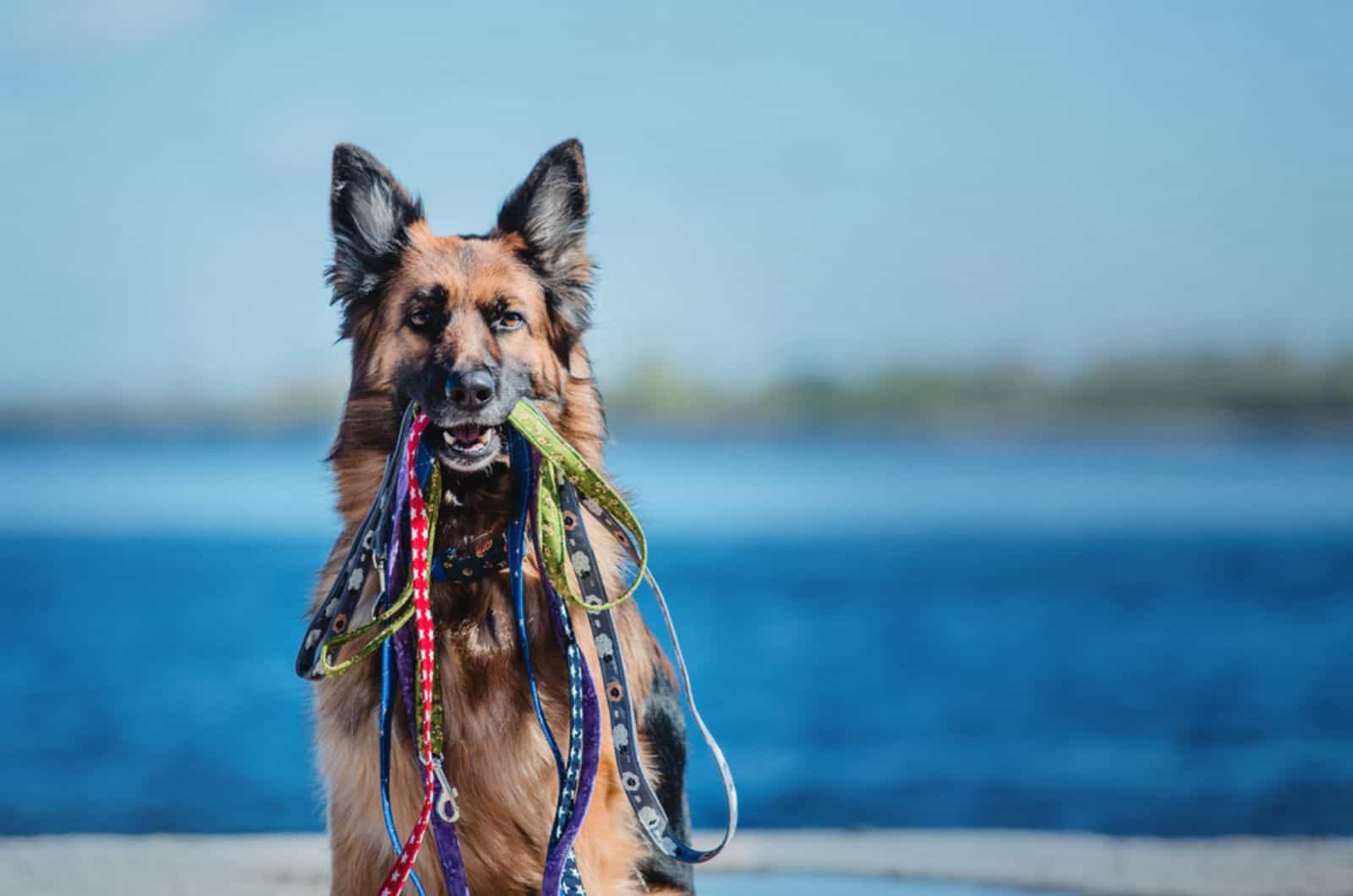
Below are the three most proven leash training methods that will help you make a true champion out of your German Shepherd. However, before anything else, you need to put some effort into socializing your canine first.
According to the U.S. Service Animals, slow and steady socialization of a GSD in its early age is one of the basics in terms of its obedience training. So, there’s your starting point!
#1 Start Without Distractions
Even the best family dogs, such as German Shepherds, are not so greatly-behaved outside for the first time. That’s why if you want your dog to start learning things properly, you need to initiate leash training in the house.
First, put a leash on your dog and give it a treat. You can do this by creating an association in their mind with the command “let’s go out” so that they get excited about being leashed.
Start walking them with a fairly tight leash indoors. Encourage their behavior with treats. If they get distracted – stop and redo it all over again. After you make sure your canine has shown you obedience on the leash – you can take the exercise outside.
#2 The Heel Method
The heel method is one of the most effective ways to train your four-legged companion, and most importantly – it’s super basic and super easy!
First of all, prepare your doggo with a proper collar and a leash. Give it a little bit of time to adapt. That’s probably gonna include some sniffing and chewing at first, but that’s fine, too!
Once you make sure your GSD has adapted to being leashed, position it on your left (or your right) side. Don’t pull too hard, but make sure it’s fairly tight. After a while, you can loosen the leash a little bit, creating some slack between you and your companion.
Start walking, and use the command “heel!” as initiation. Do this repeatedly. When your GSD starts following you, reward it with treats. As time goes by, do less-vocal commands and prolong the treat-giving time.
If your dog responds positively, you can increase the distance, too. However, every time your canine gets distracted – stop walking and redo the exercise all over again.
#3 Change Of Direction
As GSDs are one of the smartest breeds in the world, you can teach them how to change direction when walking really fast!
First, put a leash on them. Start slowly walking. Give your puppy a treat if he follows you. Do this several times. Make sure the leash is fairly tight, and not too loose.
Then, stop, turn around, and start walking in the opposite direction. If your canine follows – give him a treat immediately to reward his programmed behavior. If not, call him and motivate him with a treat to come. Then, start walking again.
The key to this exercise is to practice consistently. You can even do it in several short sessions so you don’t overwhelm your puppy all at once.
Harsh Methods Are A Big NO
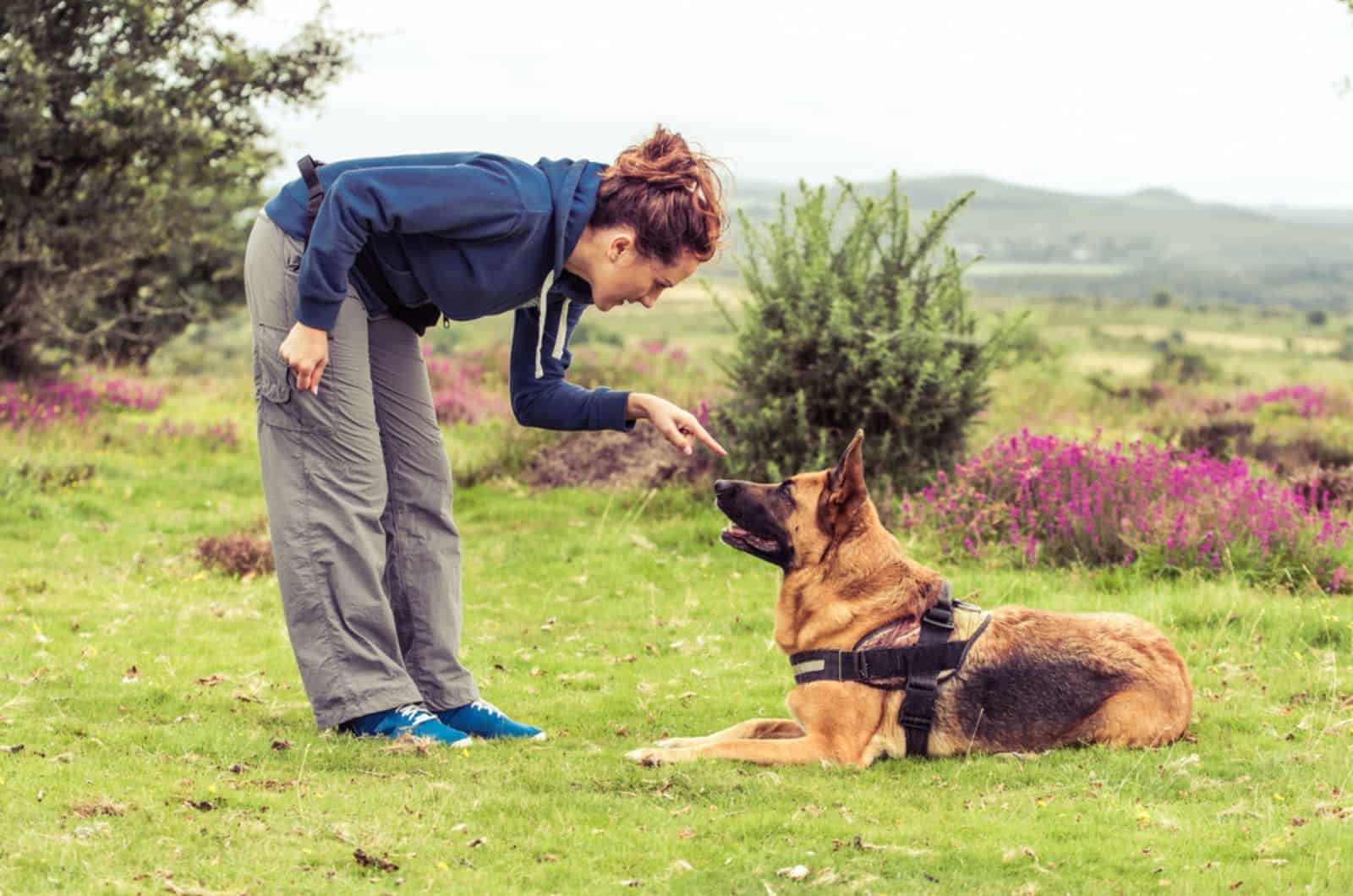
Harsh methods, such as hitting your dog or screaming at it are a big no in this regard! You should never implement any harsh method in this or any other type of training.
Instead of getting a positive, obedient companion, you most likely will get a traumatized, short-tempered, and reactive dog. And, that’s what you don’t want in a family pet.
Even pushing things is off limits. If you see that your dog doesn’t react the way you would like – let it go. Take a timeout and start all over again.
Positive Reinforcement Is The Key
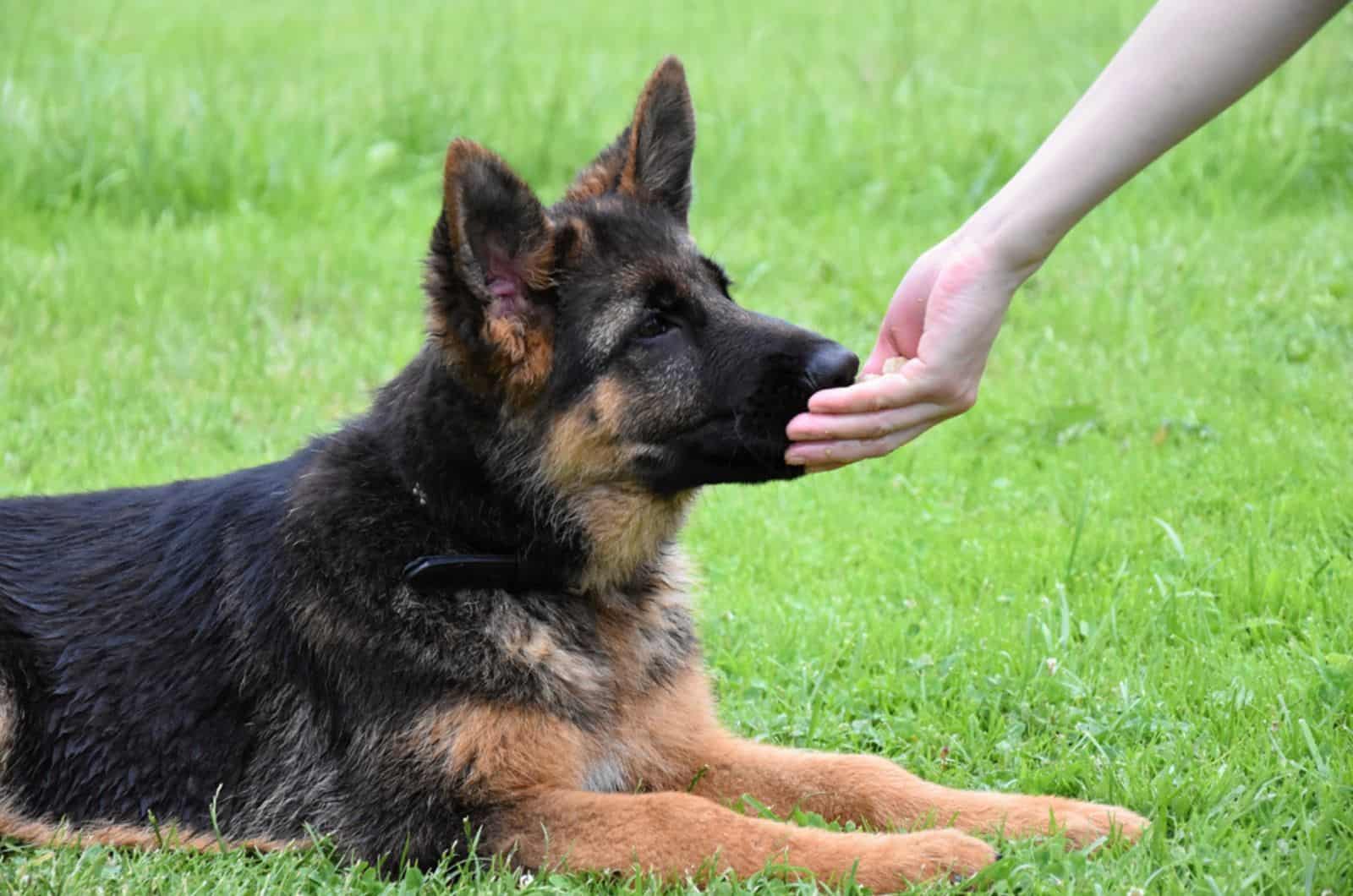
Positive reinforcement training is a proven method to stimulate good behavior in your German Shepherd. Instead of punishing him with well-known, harsh methods… try rewarding him instead.
Pet, praise, and reward anytime your canine does something good. Eventually, you’ll get a well-mannered dog that doesn’t need much time adopting new commands.
Conclusion
Leash training is a complex matter for many dog breeds. However, given the German Shepherds’ natural intelligence and work ethics, this will be a much easier process.
You can start applying three leash training methods slowly, but steadily, even if you’re a first-time dog owner. And, remember only one thing: Consistency is the key.
Read more: 6 Jealousy Signs In A German Shepherd And How To Resolve Them
